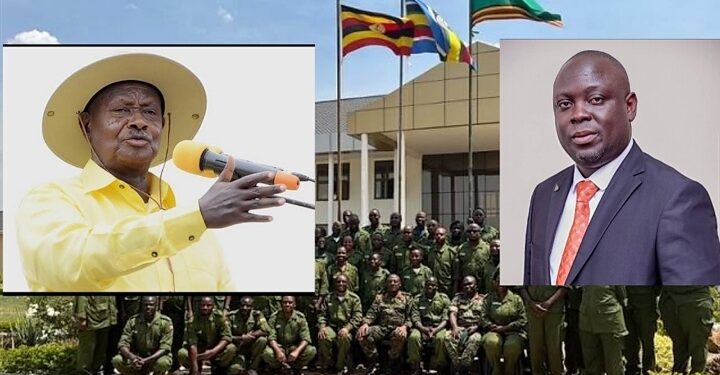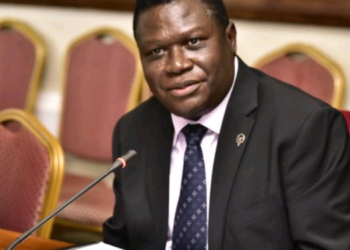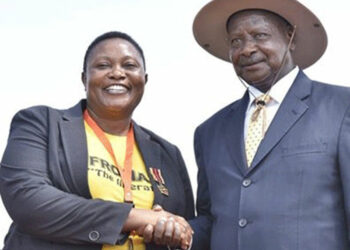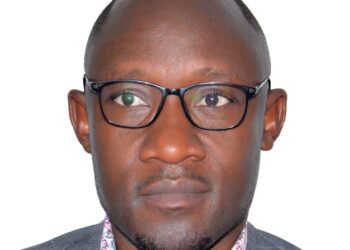Busoga sub-region is at the verge of achieving rapid socioeconomic transformation following the discovery of Rare Earth Elements (REE) on an unprecedented scale. The discovery has caused excitement and raised the spirits of everyone here. This could be the time for Busoga to shake off the tag of poverty and backwardness.
With the discovery, a private company, Rwenzori Rare Metals Limited was subsequently granted a licence to extract the REEs. The local population is eager to know how Busoga is to benefit from the mining operations just as Bunyoro Sub-Region egion is benefiting from the oil project, even before the first oil is out of the ground.
On another hand, optimistic opinion leaders are also wondering as to whether there could be other minerals in the sub-region other than the REEs to look to, for sustainable development of the region which is currently entrapped in sugarcane growing, thereby leaving many people in poverty, and hunger stricken.
Aware of these issues, I recently mobilized different stakeholders for a baraza (community or public discussion forum) involving Busoga Sub-Region local leaders, officials from the Ministry of Energy and Mineral Development (MEMD), Resident District Commissioners (RDCs) of the region and the Commissioner/Urban Authorities at 87.7 BABA FM radio premises in Bugembe, Jinja City North Division. The interaction was relayed live on BaBa Radio and TV for the concerned local communities to follow and participate in the discussions.
From the side of transparency in light of this God-sent natural resource windfall, this is a good starting point to lay bare all the facts regarding the discovery and admit ideas on how best to prevent a mineral curse from manifesting.
These are two categories of minerals that have been identified; minerals that are currently known and are being (or are soon to be) exploited, and minerals whose potential has been documented for further investigations.
REE resources have been confirmed in Bugweri, Mayuge and Bugiri and consequently, a Large-Scale Mining Licence (LML00334) granted to Rwenzori Metals to extract REE. Additional exploration in the surrounding areas is still ongoing by the company. The discovery has attracted many other mining and exploration companies to lodge License applications to explore for more undiscovered REE resources.
Gold associated with the Archaean greenstone belt environment occurs around Lake Victoria in Uganda Kenya and Tanzania. In the Ugandan belt, gold occurs in Bugiri and Namayingo districts. Evidence is gold rushes at Nakudi in Namayingo as well as Simase and Sigulu Islands. This is the same gold type in Busia areas.
Another “mineral” is clay. The clay deposits occur at Kagulu – Nsomba and the large swampy rivers draining into Lake Kyoga area may yield abundant deposits to support a large clay industry to produce clay products like those of the Uganda Clays Ltd at Kajjansi.
Granites; these are many within the sub-region. Granite and gneiss rock resources occur at many isolated hills in Busoga e.g. at Baitambogwe (Mayuge), Iganga (Iganga) Mawembe (Luuka), Namaira (Kamuli), Kasolwe (Kamuli), Ikanda and Kasato (Buyende) districts and Nsavu – Irimbi granite hills in Bugiri District. It should, however, be noted that some, for example, at Kagulu – Nsomba hill have cultural and historical significance and preference is to conserve them for those purposes.
Between 2005 and 2012, MEMD undertook mineral resource assessment in selected areas of Uganda and identified a number of new potential mineral targets. These include Quartz-vein-hosted gold in Ivukula. There is high potential for discovery of economic deposits of base metals (Copper, Nickel and Cobalt) within the gabbro rock bodies which were discovered during a recent geological mapping and mineral resources assessment exercise. The prospects include: Kasokwe (Kaliro), Namunyumya (Bugweri), Butamakita (Iganga) , Bukanga & Naigobya (Luuka), Nabukalu & Bugiri (Bugiri).
Kimberlites, the source rocks for Diamond, have been pinpointed in the entire Busoga, the most prominent one being documented at Kidera in Buyende District.
Iron ore potential was estimated on Namugongo and Nambogwe peninsulas in Mayuge District along the shores of Lake Victoria. Peat, a heterogeneous mixture of more or less decomposed plant (humus) material, has also been discovered.
Peat deposits exist along the river valley swamps in central, east and southwestern parts of Uganda. In Busoga, peat deposits occur mainly along the lower shoreline of Lake Kyoga. Peat is mainly used as a source of energy and in urban agriculture as soil for horticulture in the backyards. If this resource is harnessed in substantial amounts, it has the potential to turn around our energy and small space farming needs.
Therefore, apart from direct benefits to land owners, the sub counties and districts where mining is taking place, Busoga sub-region is set to benefit from the ongoing prospective and mining projects in a number of ways. These include: employment for locals, market for locally produced goods and services, revenue from accommodation (rental houses) for workers in the projects, revenue from royalty share on government revenue from the project’s mineral production (Central Government receives 70%, District 15%, Sub County 10% and Land owner 5% of the total royalties from the productions) and improvement on infrastructure and social service overheads (electricity supply, water, roads, health care) in the region.
As leaders of and from the sub-region, this is an opportunity to embrace with both hands. The plan of Government to socioeconomically transform Ugandans has received a big boost of nature which we must optimise and leave a legacy. The Basoga should be sensitised more on the meaning of this grand discovery which has come when we needed it most and can overturn Busoga’s current poor economic landscape. When God blesses us, who can say “no”!
Everywhere, Project Affected persons (PAPs) should calm down as nobody will be sent off their land without consultation, amicable agreements and fair compensation. And in line with H.E the President’s directives, no minerals mined should be exported in raw form as that will be equivalent to throwing away jobs for Basoga.
However, the discovery of these minerals shouldn’t in anyway distract the people from engaging in agricultural production because not everyone will fit in the mining sector. Moreso, lots of food products will be needed to feed miners and to keep away inflation arising from short supply of food amidst a flourishing mineral industry. The sub-region is also endowed with a latent tourism potential which requires proper packaging and investment to bring about groundbreaking economic returns. This is Busoga’s time, as part of the bigger National Development Plans!
The author is the Deputy Press Secretary of the President of Uganda
Contact: faruk.kirunda@statehouse.go.ug
0776980486/0783990861
Do you have a story in your community or an opinion to share with us: Email us at editorial@watchdoguganda.com













